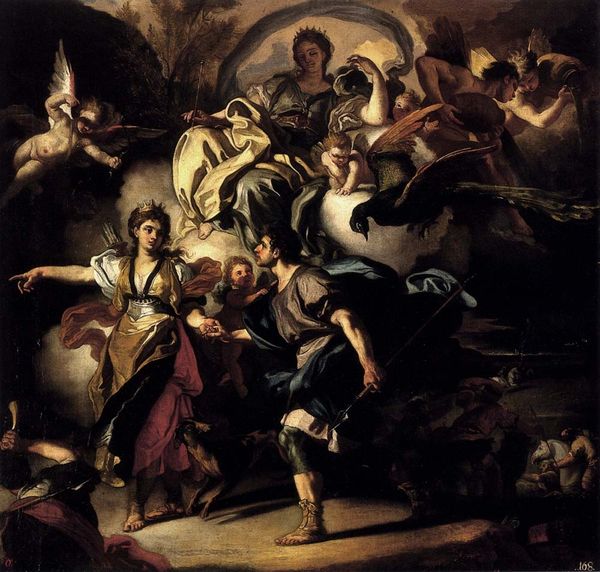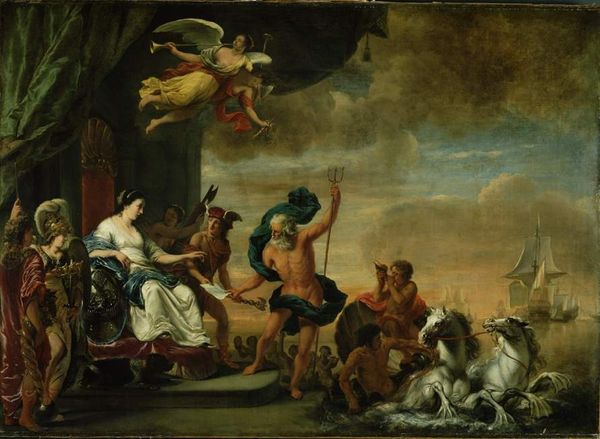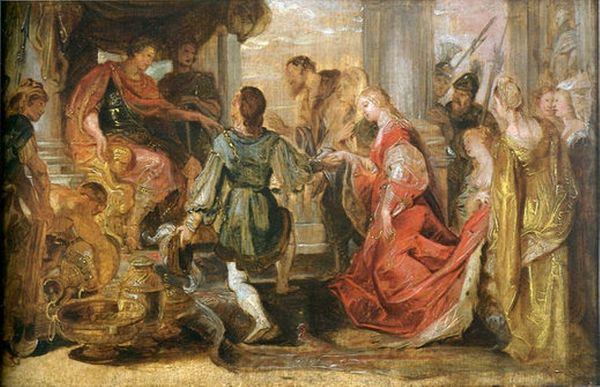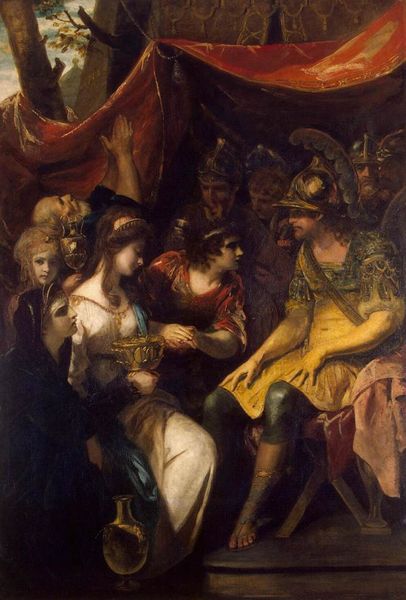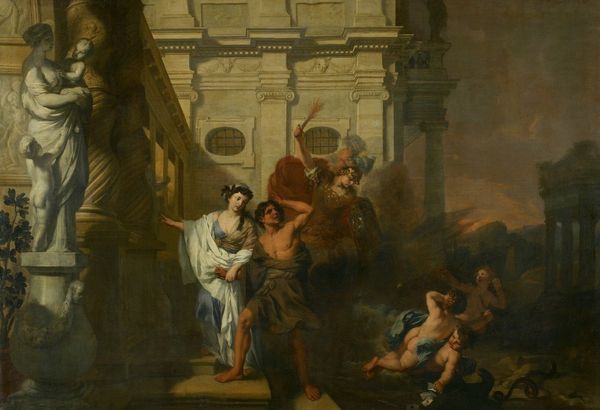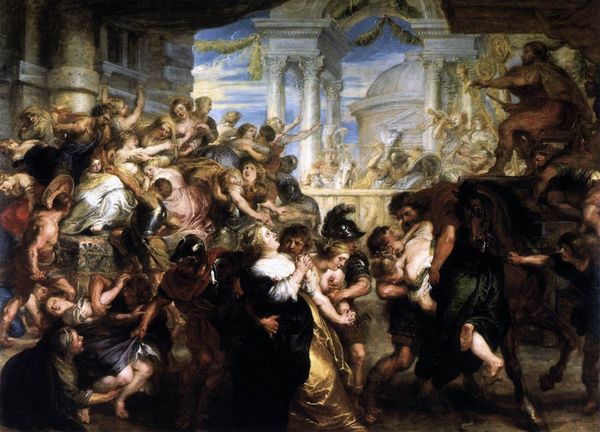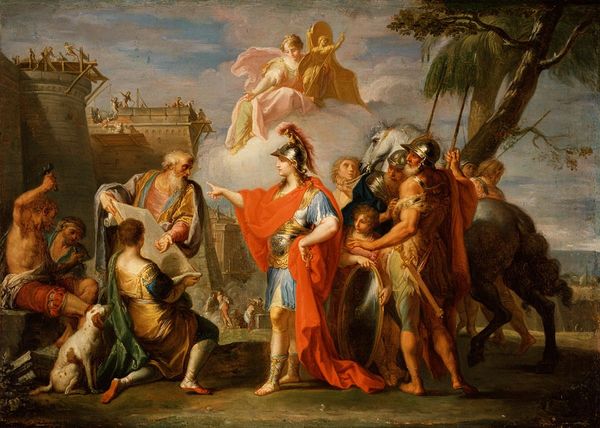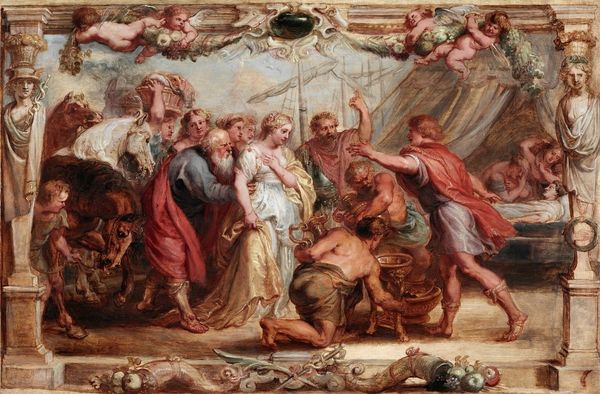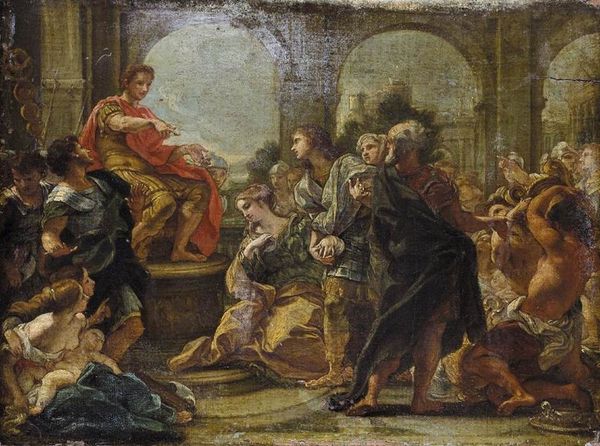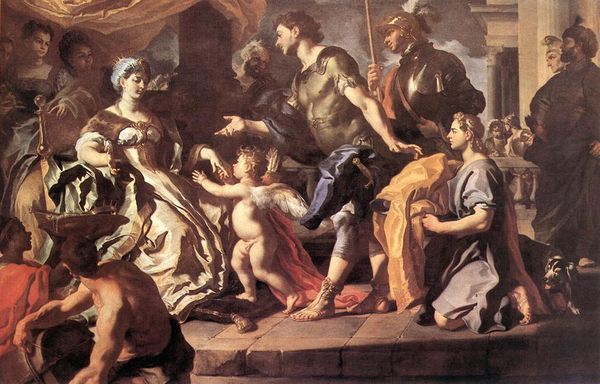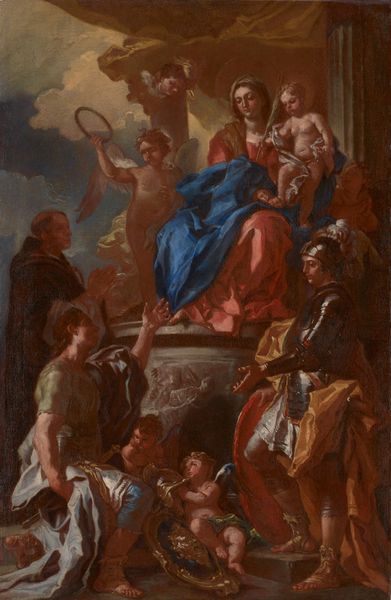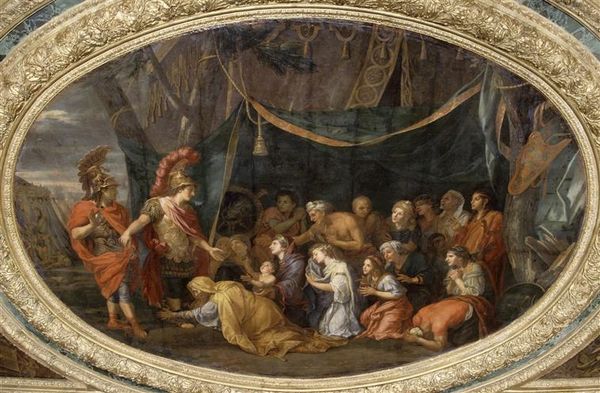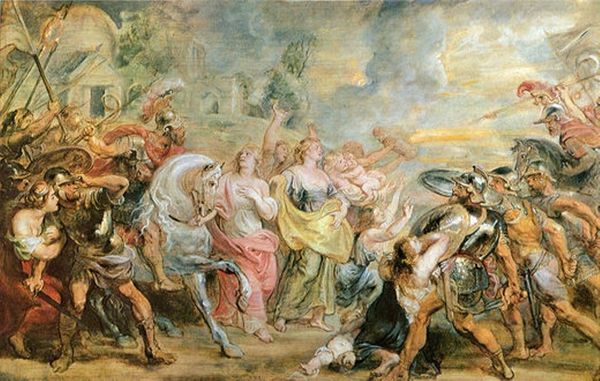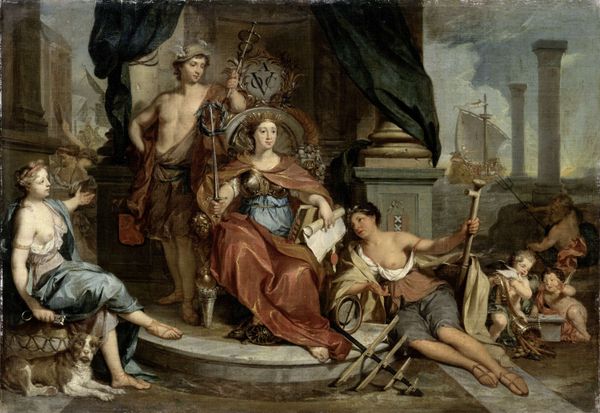
painting, oil-paint
#
allegory
#
baroque
#
painting
#
oil-paint
#
mythology
#
history-painting
Copyright: Public domain
Curator: What we have before us is "The Resolution of Louis XIV to Make War on the Dutch Republic" by Charles Le Brun, rendered in oil paint. Its dramatic composition speaks volumes. Editor: Yes, immediately striking is the theatricality of the scene. It feels deliberately staged, and I can't help but wonder about the underlying power dynamics. The figure in the center exudes a studied nonchalance. Curator: Indeed, Louis XIV is depicted as an almost god-like figure. Notice the helmeted figure of Minerva at his left, representing wisdom and strategic warfare, while Mars, the god of war himself, stands ready to execute Louis's commands. There's an effort to link Louis with notions of just and divinely sanctioned authority. Editor: The deliberate invocation of classical mythology is intriguing. The slain figure at the bottom represents a vanquished foe. What’s compelling here is the propagandistic angle; it's more than just art, it is carefully constructed justification for aggression, obscuring perhaps more complicated and morally ambiguous realities. Curator: Precisely. Symbols abound, from the broken shield representing the defeated Dutch to the ethereal figures promising victory. This echoes a long tradition of associating monarchs with divine right through symbols readily recognized in its time. It reinforces cultural narratives through classical frameworks. Editor: Which makes me consider how audiences, then and now, are invited to decode and interpret symbols to understand justifications for war, wrapped in myth and pageantry. Le Brun creates a spectacle, using oil to solidify narratives of national strength and perhaps blind ambition. Curator: Consider also how Le Brun's use of light heightens the drama, focusing our attention on Louis and reinforcing the narrative of his authority and inevitability. The symbolism functions almost like a language to the 17th century viewer, laden with implied meaning and shared cultural understanding. Editor: Today though, doesn't that staged quality underscore the constructed nature of power, revealing more about its inherent vulnerability and need for constant performance? The painting almost deconstructs itself in its attempt to construct an aura of inevitability. Curator: It’s a fascinating dialogue, this painting, and it continues to prompt new questions across centuries. Editor: Absolutely, and I leave contemplating its capacity to trigger both pride and critical thought even now.
Comments
No comments
Be the first to comment and join the conversation on the ultimate creative platform.
